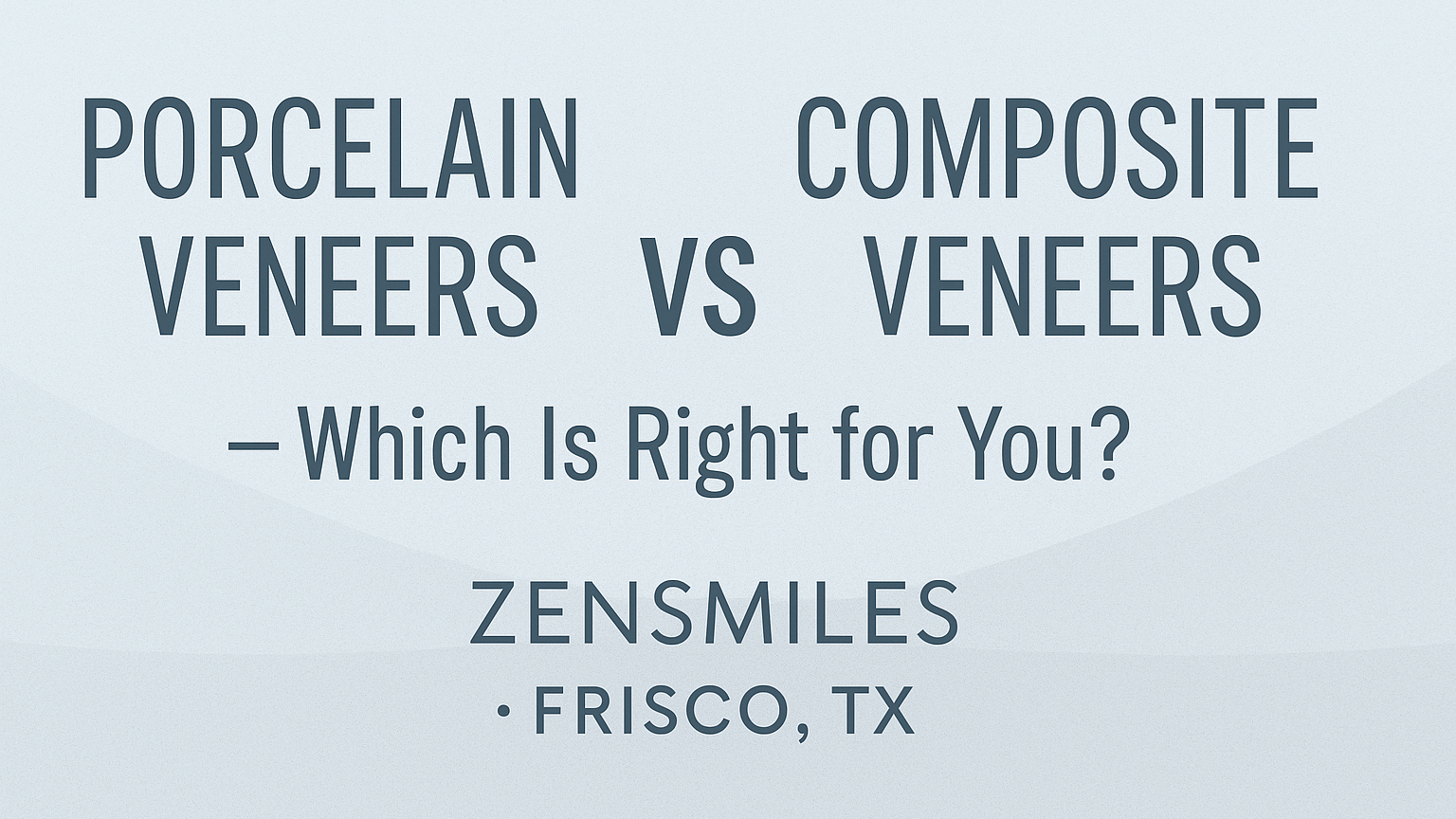Porcelain Veneers vs. Composite Veneers — Which Is Right for You?
&srotate=0)
Veneers can quickly transform your smile, but porcelain and composite have different strengths. This guide compares longevity, aesthetics, cost, and maintenance—so you can choose with confidence. Porcelain Veneers vs. Composite Veneers — Which Is Right for You?

Veneers are ultra-thin restorations placed on the front of teeth to refine color, shape, length, and symmetry. They correct discoloration, chips, worn edges, small gaps, and slight misalignment—often in fewer visits than you expect. What Are Veneers?
Considerations: higher cost, 2–3 visits, minimal enamel reshaping. Zensmiles Difference: Porcelain veneers are fabricated by elite partner laboratories and placed with sedation-assisted precision when desired. Porcelain Veneers — Premium, Long-Lasting Artistry
Considerations: shorter lifespan (˜5–8 years), may stain, slightly less translucent than porcelain. Composite Veneers — Conservative, Affordable, Fast

Porcelain vs. Composite — Side-by-Side
Feature Porcelain Veneers Composite Veneers Material Medical-grade ceramic (lab-made) Tooth-colored resin (chairside) Longevity 10–20+ years 5–8 years Aesthetics Superior translucency, most natural Good; slightly more opaque Stain Resistance Excellent Moderate Treatment Time 2–3 visits Often 1 visit Reversibility Not reversible Often reversible Typical Cost (per tooth) $1,200–$2,500 $600–$1,200 Best For High-esthetics, full smile makeovers Minor corrections, budget-friendly Maintenance Routine hygiene and care Periodic polish/maintenance
Your ideal option depends on aesthetic goals, budget, timeline, and tooth structure. During your consultation, we’ll provide a digital preview and a clear plan—for porcelain, composite, or a staged approach. Which Type of Veneer Is Right for You?
Cost, Longevity & Care Tips
© Zensmiles • Cosmetic Dentistry • Veneers • Ultimate Guide to Cosmetic Dentistry